Before we get into fuels. Here are a few points to cover.
1. Always store and transport your fuel in the original container. Do not store fuel in dip cans. Dip cans are for dipping only. Keep a funnel with you so you can return the fuel back when you're done.
2. Do not ever put fuel in a glass container or a plastic container that is not designed to be compatible with your fuel.
3. Spin out your wicks after you dip them. Leaving extra fuel on your wicks is a good way to transfer fuel and fire to your body.
4. Your fueling area needs to be separate from your performance area, and in a secure area that is free from fire hazards.
5. Always have a current tagged type ABC or CO2 fire extinguisher in your fueling area, and know how to use it. Place the extinguisher near the fuel, but not so close that you will not be able to reach it if is a fire occurs.
6. If you light a dip can on fire, don't panic, just put the lid on it and it will usually go out.
7. Always transport fuel in a secure manner, so it can't roll around and become a fire hazard in your vehicle
8. All fuels have what is called a "flashpoint." The flashpoint is the temperature at which the fuel releases enough vapor that holding a flame over an open container of it will cause it to ignite. Light (Watery looking) fuels like white gas or alcohol, have a low flashpoint (Below 0°) and will readily light when a flame is in its vicinity. Heavier (Oilier) fuels like kerosene and lamp oil have a much higher flashpoint. These fuels must be heated to several hundred degrees before they will release enough vapor to sustain a flame. When lighting a prop using one of these fuels, the lighter will have to heat the fuel on the prop to release enough vapor to cause ignition. Sometimes a low flashpoint fuel will be added to a higher flashpoint fuel to make it easier to light.
9. You can't burn a liquid. When a prop is on fire, you are actually burning the vapor that is evaporating from the fuel. As the liquid evaporates off the surface of a prop, the vapor has to come from the liquid that is deeper inside the wick. Because of this, the flame moves closer to the wick as the fuel burns. Towards the end of the burn, the flame will actually start burning into the outer layers of the wick. This heats the wick beyond the temperature Kevlar is designed to sustain. After many burns, wicks will turn white. This is because the Kevlar has burnt off, and the higher temperature fiberglass core of the yarn is now exposed. This is not a problem, however fiberglass is not as strong as Kevlar so it will be less resistant to impacts with the ground. You can substantially increase the life of your wicks by extinguishing your flame towards the end of your burn.
10. MSDS (Material Safety and Data Sheets) are provided below for various fuels. These sheets tell you the dangers of these fuels in the liquid state. They do not provide any information for the hazards related to burning them.
Fuel used for fire tools varies greatly, but I'm going to focus on what is typically used in the United States.
Coleman Camp Fuel: This is the most common fuel used in the United States. It is also referred to as white gas. Coleman Fuel is an easy to light, fast burning fuel with a moderate to low smoke level. It is readily available at camping and discount stores such as Walmart and Kmart. This fuel has a low flashpoint, meaning that it is very easy to light the vapors on fire. Because of this, you have to be very careful around open containers of fuel. Because Coleman fuel is very oxygen hungry, it is actually easier to extinguish than oilier fuels like kerosene. Get MSDS
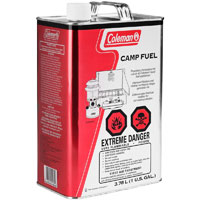
Kerosene: Also called "Kero," is harder to light, has a longer burn, is smokier and harder to extinguish. Kerosene is more common outside of the United States were Coleman fuel is not available. Kerosene is less expensive than Coleman fuel when purchased out of a pump. Kerosene is readily available by the gallon in rural areas, but may be harder to find in urban areas. It can typically be purchased by the gallon at hardware stores. Get MSDS
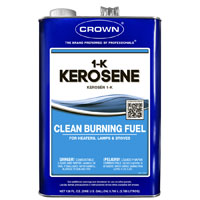
Lamp oil: Lamp oil is very similar to kerosene in its properties. If you are going to use lamp oil, make sure you get the ultrapure variety and not the citronella. The citronella is extremely smoky and not something you want to be breathing in. Most people use ultrapure lamp oil for fire breathing because it is believed to be less toxic than most other fuels. Keep in mind that it is not non-toxic and there is a high risk of getting chemical pneumonia when fire breathing from this fuel. This is especially true for people who have not been properly trained or have bad technique. Do not attempt to fire breath without proper mentoring. This fuel is typically available anywhere that sells tiki torches. Get MSDS
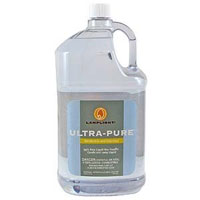
Isopropyl Alcohol: Isopropyl Alcohol, also known and rubbing alcohol, is the stuff you buy at the drugstore. It is usually provided in a 70% to 90% concentration. The rest is water. This means a 70% isopropyl alcohol would be 70% isopropyl and 30% water. This high water content creates a low temperature flame and it is not very bright. This fuel can be useful for people who are just getting acclimated to fire and are not ready for a hotter fuel. Isopropyl is also commonly used on props such as fire eating torches and juggling balls. While there is still a burn risk associated with isopropyl alcohol, it produces a flame that is more manageable when near the skin. It is typically available from drug and grocery stores in small containers. Get MSDS
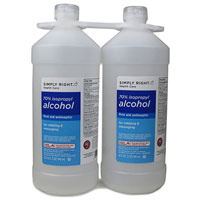
Denatured alcohol: Denatured alcohol is ethyl alcohol that has been "denatured" or made poisonous, so it cannot be consumed as drinking alcohol. This can be done with many different types of additives and the flame color will vary from brand to brand depending on the addatives. Denatured alcohol can be a good option when smoke must be kept to a minimum. Some brands of Denatured Alcohol are useful for making colored flames. WE have had some lick with SLX brand. See Methanol below for more details. Typically available from hardware stores. Get MSDS
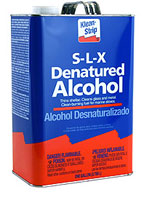
Methanol: Methanol is and alcohol typically used a racing fuel and may be difficult to find. Methanol burns with an almost invisible flame. This can make it dangerous to use, as something may be on fire without you realizing it. Methanol is typically use as a fire performance fuel when someone is trying to make a colored flame. This works because the almost invisable flame is easy to color. This is done by adding specific inorganic salts to the fuel. Adding chemicals to the fuel may increase the toxicity of the flame. More information on this is available on Wikipedia. Get MSDS
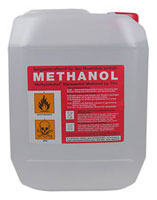
This is not an all-inclusive list, but do not use gasoline because of its explosive properties.
